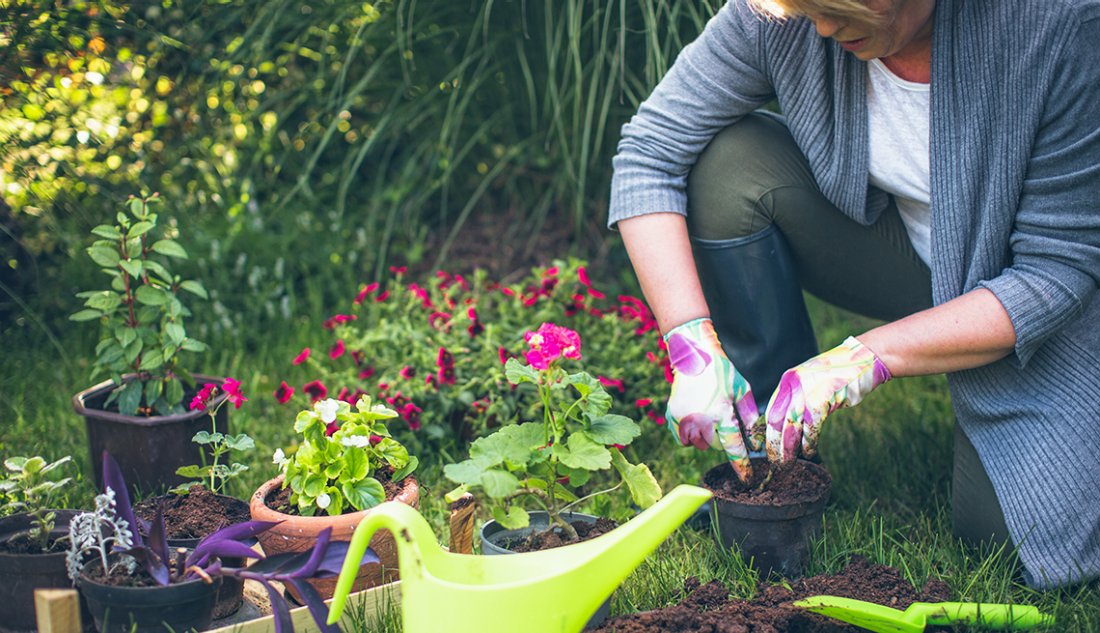Kansas State University Research and Extension
Container gardening has been a hot topic over the last several years. Yes, there’s plenty to be stated about the value of field gardening. It’s a convenient manner to develop greens and vegetation, particularly in unusual situations where conventional gardening isn’t feasible. Container gardening isn’t always without problems. Extra care is essential to make certain that the plants are capable of grow properly; the confined space of a box makes it specifically tough to control the desires of the flora. Problems that complicate field gardening include crowded roots multiplied heat strain, rapid depletion of soil moisture, and an exhausting delivery of plant vitamins.
To do the process right from the beginning, you need to get the right potting soil. The kind of soil you use for your field garden has to be porous sufficient to empty freely like coarse sand, and also have the ability to preserve water and nutrients like a high best garden loam. Unfortunately, garden soil is not appropriate for box gardening, as it’s too “tight” and puddles badly in pots (right drainage is crucial for accurate air penetration into the soil, promoting healthy root growth). Good nice, self-made potting mixes can be made the usage of lawn soil mixed with sand and peat moss; however, it’s far frequently higher to buy commercially organized potting mix as a substitute.
Containers for the box garden may vary in style, size, and fabric composition; the want for appearance may dictate which is selected. Homemade containers can be built with pretty much whatever to keep the soil. Whether you buy a commercially synthetic box or use one you’ve made, the handiest important aspect is that your container has holes within the bottom to empty away from the extra water. The size of the field needed is determined using the size, type, and quantity of flora with a purpose to be grown. It’s a balancing act to choose a box to maintain sufficient soil to meet the anticipated desires of the plant life to grow in it.

If the vegetation is often uncovered to gusty winds and extreme solar, a larger than vital box may be wished. You may also need to pick out white over darker colored packing containers to mirror sunlight which allows preserving a cooler soil temperature in the uncovered locations. Proper fertilization is essential for a healthful plant boom; plant nutrients are speedily depleted in container pots. Nutrient depletion is not only a result of everyday plant utilization; it additionally affects leaching because of the need for frequent irrigation. Using a time-launch kind fertilizer in the potting blend is in particular useful for sluggish developing flora with minimal nutrient necessities; but, it also includes insufficient for providing the desires of huge, swiftly growing vegetable plants. These plants benefit from a reasonably consistent application of fertilizer supplied with the irrigation water.
Water needed for field plants varies with the sort, variety, and size of flowers, the volume of potting soil within the box, the climate, and the publicity of plant life to solar and wind. It’s pleasant to test the box soil each morning; try this with the aid of probing the soil together with your fingertips about an inch below the floor. If the soil feels damp to barely dry, it’s time to irrigate. However, if the soil feels wet, the weatherman says it’s going to be a warm, windy day, irrigate besides. If the soil is moist and there’s water inside the drain tray, you could hold off on the water that day. Here’s a rule of thumb; every time you irrigate, practice enough water so that it flows freely out the drainage holes into the drainage tray.














